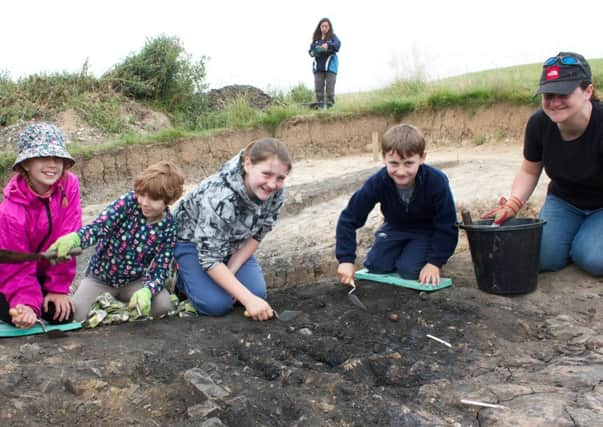Needed: Budding young archaeologists in Northumberland


A competition run by the Council for British Archaeology’s nationwide Young Archaeologists’ Club (YAC) is looking for three young people aged eight to 16 to assist a team of archaeologists from the Bamburgh Research Project working at the site on Sunday, July 2.
During their Dig It! with YAC excavation day, the young winners will dig, wash finds, and learn other archaeological skills too – in fact, they’ll learn what being an archaeologist is really like. Each of the winners will also receive a haversack of archaeological tools courtesy of archaeological tool suppliers Past Horizons, complete with their own trowel.
Advertisement
Hide AdAdvertisement
Hide AdThe excavations at Bradford Kaims, near Lucker, began around eight years ago, led by a team from the Bamburgh Research Project. The team started to explore the prehistoric landscape using testpits – one-metre-square holes that give excellent little views into the archaeology.
The Kaims was chosen because of its topography (the shape of the land). It looked like a likely place for where prehistoric communities might have lived. The site sits on the edge of a hill where the clay meets a peat fen. This provides good sources of water and a habitat where wildlife flourished.
The first test pits yielded very little, but eventually a picture began to form of an area where Mesolithic (middle Stone Age), Neolithic (new Stone Age) and Bronze Age people had lived.
The main evidence is from the burnt mounds, which are large dumps of fire-cracked stones used to heat water in an age before pottery was widely used. Stones are heated in a fire. The hot rocks were added to water placed in wooden containers and the heat from the stones heats the water. Both the hot water and the steam can be used for a variety of things, cooking, washing, saunas etc.
Advertisement
Hide AdAdvertisement
Hide AdThe size of the burnt mounds, some more than 10 metres in diameter, suggests large-scale activity, conducted over a long period.
Dating evidence at the site comes from flint and pottery, but carbon dates have also been analysed, placing the sites around 3,000 to 4,500 BC (up to 6,500 years ago).
The burnt mounds are also associated with wooden platforms, made from huge piles of brushwood, staked into the peat, which are placed alongside the mounds. Their use is still being debated and investigated, but the preservation in the wetland is amazing.
Young people who want to have the chance to join the dig team on July 2 should visit the YAC website at www.yac-uk.org/news/dig-it-with- yac-at-bradford-kaims to find out how to enter the competition. The closing date is next Wednesday (June 21).
Advertisement
Hide AdAdvertisement
Hide AdNicky Milsted, from the Council for British Archaeology, said: “Our Dig It! with YAC excavation competitions provide an amazing and unique opportunity for interested young people to do real archaeology on real excavation sites. I’m really looking forward to finding out what they discover on site this year.”